Is it possible to predict the number of goals in a given match?
Football predictions are very hard but this is the second of three posts that try to answer this question!
In the first post of the series, we explored the relation of the number of goals in a match with general factors like the evolution of the number of goals over the years, the average in each league, the different weeks in a season and the different exact scores the matches presented.
In this post, we will analyze the key factors that help us predict the number of goals of a single, specific match. And the result is not what everyone expects!
Who are we and why would that be important?
If you are new at Stork Sports, you can find here what we do and how we recommend games. And you can signup to your newsletter here and get our content and bet tips at first hand!
It could be interesting to predict the number of goals just to help us understand the patterns that we can find and what factors are important when analyzing a match but it is also very important when we want to get in the Under/Over goals market. For those who are not familiar, it is a very popular bet market in which you bet on the number of goals (or if the match will have over/under a number of goals).
Part 2 – Predicting the number of goals in a match – Key Factors
The first thing we will look at is the most popular information that people usually look at before betting on the over/under market: the past results.
The information
- Average Goals Scored/Conceded by a team in the current Season (Home and Away)
- Average matches with Under 1.5, 2.5 and 3.5 goals in the current Season (Home and Away)
- Average Goals Scored/Conceded by a team in the last game, last 3 and last 5 games (Home and Away)
The Data
To do so we will use data from 5 leagues: Bundesliga, Campeonato Brasileiro, La Liga, Serie A and Premier League, from 2003/2004 to the 2016/2017 season.
How we looked at it
We tried to predict the number of goals in a match with all the information we would have just before the match, simulating the real situation we face every day. So when we use the average number of goals in a season, that is the average of all the matches BEFORE the match we are trying to predict.
The next image shows the relation between the average of goals scored and conceded (average of all the teams matches up until the next game, that is the average that the team had BEFORE the game we are trying to predict). What people expect is that teams with higher averages of goals in their past games will have more expected goals in their next match.


The most interesting result is that there is an inverse relationship between the average goals conceded by the home team and the number of goals in the match. You are not misreading this. If the home team has a HIGH average of goals conceded the next match is expected to have FEWER goals. Hold on to this, we will explain why this contra-intuitive fact happens.
The average goals scored by the home team has the most positive relationship with the number of goals in the next match. The average goals scored and conceded by the away team also have a positive but slightly smaller relation with the number of goals.
Another factor that most people take into account in predicting over/under goals in a match is the historical data of each team. The next figure shows the relation between the % of matches each team has with over/under 1.5, 2.5 and 3.5 goals before the game and the result of the game. What we expect is that teams with a high percentage of matches under 2.5 goals with have more matches with under 2.5 goals in the future.
We can see a positive relation, as expected, between past under 1.5,2.5 and 3.5 matches and future results. We should notice that this relation is not very strong. In the Under/Over 2.5 goals, for example, matches that ended up with over 2.5 games presented had a past result of 49.4% over matches for the home team and 51.5% of under matches, the difference in past performance was less than 2%. The lesson here is that simple the past number of under/over matches are a weak way of predicting future matches.
What most people are missing
Let’s go back to the most strange data, the inverse relation of goals conceded by the home team and the total number of goals in the next match. At first, you would think that if the team conceded more goals in the past we expect more goals in the next games but that is not what is happening.
To understand why, we have to go back to our previous post, where we analyzed the what is the % of exact scores in each match. The next figure shows the same information but highlighting the number of goals and the result (home, draw, away):
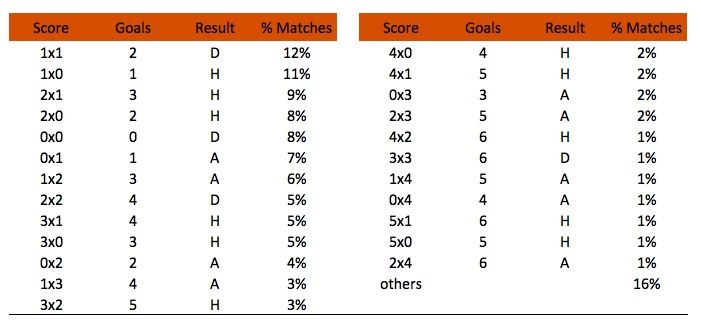

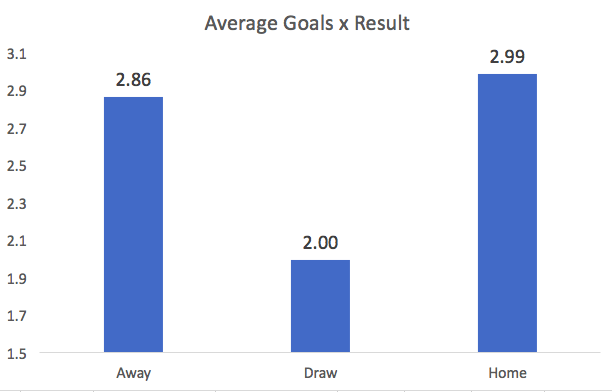
We can see a strong relationship between the result (home, draw, away) and the number of goals. Matches which the home team win are expected to have more goals and draw matches have considerably fewer goals.
And how this helps us understand the negative relationship between the number of goals conceded by the home team and the total number of goals?
Well, teams with a high total goal conceded have less chance of winning, so if the home team has a smaller chance of winning, we expect fewer goals in that match. When the home team has a higher chance of winning, we expect more goals in the match.
With this new information, let’s look at what we found as key factors to estimate the number of goals in a match.
Key Factors
-
- Average goals scored by the home team in the season. We expect teams that scored more goals in the past to have matches with more goals in the future.
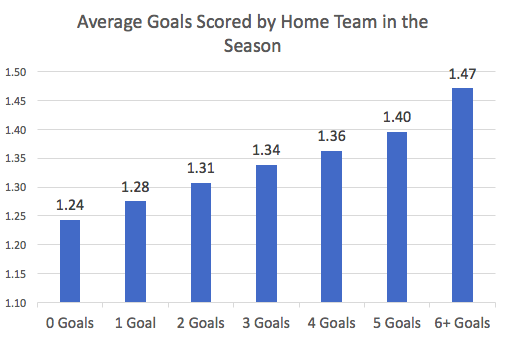
- Average goals conceded by the away team in the season. We expect teams that conceded more goals in the past to have matches with more goals in the future (when playing away).
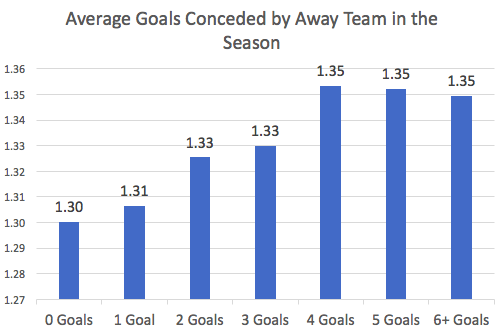
- Points difference between the home team and the away team. We expect more goals in matches where the home team has more points than the away team.
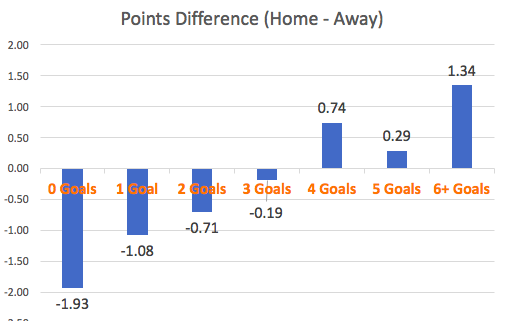
- Average points by the home team in the season, playing as the home team. We expect more goals in matches where the home team has a good track record of playing at home.
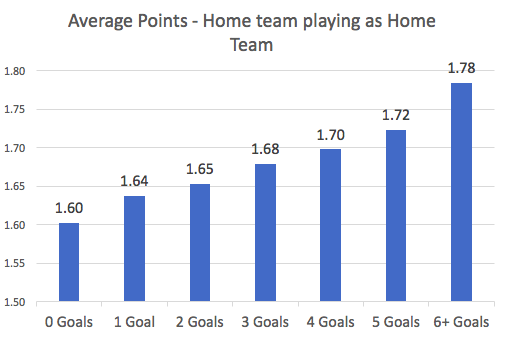
- Average goals scored by the home team in the last 5 matches. We expect more goals in matches where the home team attack had a good performance in the last 5 matches.
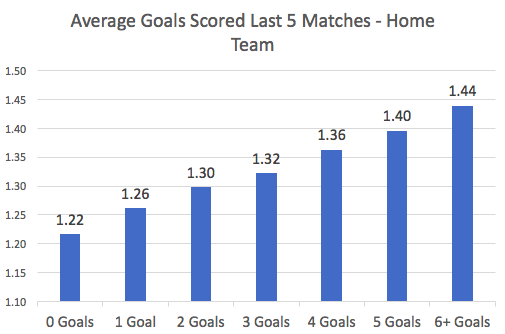
- Percentage (%) of home team matches with under 2.5 goals in the season. We expect that the greater the % of under 2.5 matches by the home team fewer goals will happen in the match.
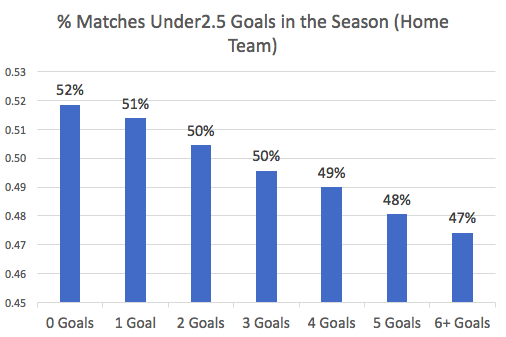
- Percentage (%) of away team matches with under 2.5 goals in the season. We expect that the greater the % of under 2.5 matches by the away team fewer goals will happen in the match.
- Average goals scored by the home team in the season. We expect teams that scored more goals in the past to have matches with more goals in the future.
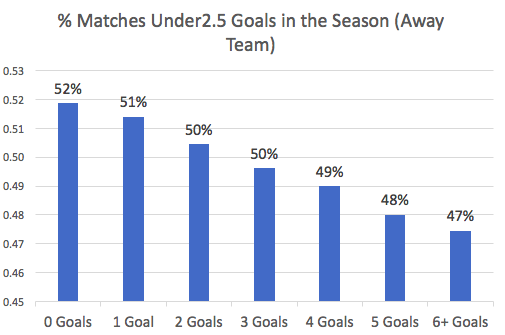
Predicting football matches is a very hard thing to do! Understanding the factors that influence the number of goals is a great step towards better predictions!All this factor have a close relationship with the number of goals we expect in a match and help us to estimate this number.
All these factors have a close relationship with the number of goals we expect in a match and help us to estimate this number.
Ok… what’s next?
In this post, we understood how past results correlate with the number of goals in a given match. We learned that the number of goals has a relationship with the home team chanced of winning and other things.
But there are still some important questions to be answered:
- What is the most important factor that influences the number of goals?
- How can I weigh all the information and make a prediction?
- How sure can I be about my predictions?
- Given a real match, what are the chances of it having over 2.5 goals?
The next post in the series will talk about how to transform this information into probabilities! Don’t forget to sign up for our newsletter so you won’t miss it and also get our free football predictions and bet tips.
Feel free to contact us at stork@storksports.com if you have any questions or suggestions on this post!
Stork Sports Team



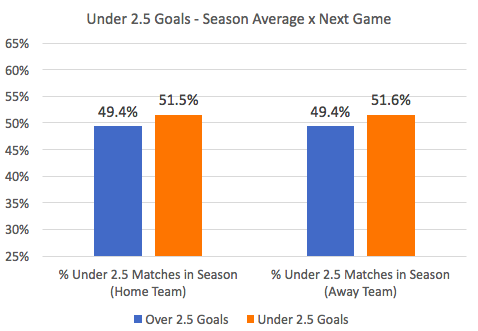
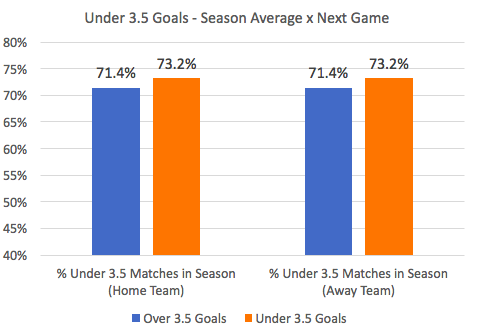
Ur great
thanks!
Very helpful and good job guys
where is the next post?
These your articles are so insightful and enlightening. Please when is the ‘PART 3’ going to be posted? It’s been almost 3 years now.
PLEASE I really need the completion of this article so as to increase my chances of placing profitable bets.
Keep up the good work and I am so grateful to have found this site.
part 3 please